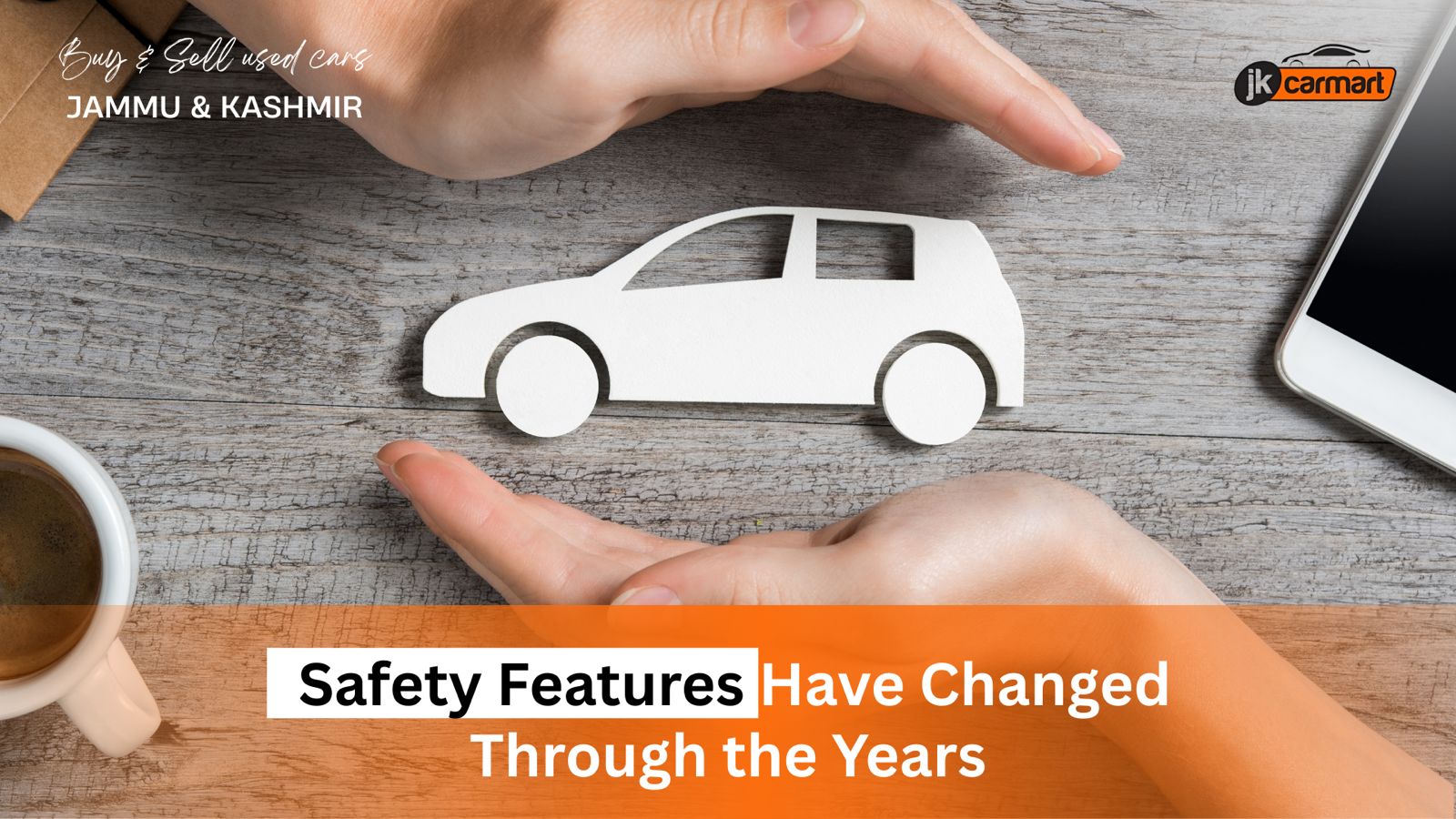Introduction
Do you ever think about how safe your car really is? I mean, earlier in our grandparents’ times, cars used to be dangerous. There used to be no seatbelts or airbags. In fact, they generally missed proper windshields, too.
But as the time changed, these things changed completely. Engineers started to think of ways to make the cars safer than before. Also, as buyers, when shopping for a new car, safety is one of the very first things we check, don’t we?
So, when cars started to evolve, the first additions were wipers and mirrors. Then seatbelts and airbags were added. And now? Cars watch the road for you and can even stop the car if you don’t react in time.
Cars have seen a fascinating journey of innovation over time. Every development has made driving a little less dangerous. In this blog, let me take you through how car safety grew from almost nothing to the advanced systems we have today.
The Early Days of Car Safety
Let me take you back to the past century. If you were driving in the early 1900s, staying safe was mostly up to the driver, because cars didn’t have any built-in protection.
The first big turning point came in the year 1903 with the windshield wiper. This solved the problem of not being able to see the road clearly in the rain.
A few years later, rear-view mirrors were introduced in 1911. Earlier, it was not possible to look at the traffic behind the car. These mirrors made driving much easier for the driver.
By 1927, windshields started using laminated glass. This glass was stronger than the glass previously used. It was useful because in case of an accident, it helped prevent the glass from breaking into sharp pieces. This small change saved countless drivers from losing their eyesight during a car accident.
Also Read: Top 10 Things To Check Before You Buy A Second-Hand Car
Timeline of Early Innovations
| Year | Car Safety Innovation | Why It Mattered |
| 1903 | Windshield wiper | Gave drivers a clear vision in the rain |
| 1927 | Laminated safety glass | Stopped windshields from turning into dangerous shards |
| 1934 | First crash test (GM) | Let engineers study crashes and build safer cars |
Then came 1934, when General Motors ran the very first crash test. They deliberately smashed a car to see what would happen.
For the first time, engineers had real data about what happened in a collision. Now with that knowledge, they started designing cars with survival in mind.
Regulation and Mandatory Safety Features
By the 1970s and 80s, Governments around the world began forcing automakers to take car safety seriously. This led to the introduction of:
- Seatbelt Laws (1970s): Australia was the first country to pass the law which required people to wear seatbelts. After the introduction of this rule, people realised how much seatbelts helped in reducing the number of deaths on the road.
- ABS – Anti-lock Braking System (1978): This was first introduced by Mercedes-Benz. When you have to brake suddenly on the road, ABS allows drivers to press the brakes firmly without losing control of the vehicle altogether.
- Airbags (1980s): Airbags were first added to expensive cars only. By the late 80s and 90s, these airbags became common in most cars. These were especially helpful as they protected drivers and passengers during serious crashes.
Graph Suggestion: Showing rising seatbelt usage rates and falling fatality rates over these decades.
Rise of Electronic Car Safety Systems
Later in the 1990s and early 2000s, engineers started designing cars when the goal of avoiding any chance of car accidents at all. The following features were introduced for this:
- Electronic Stability Control (1995): If the car starts to skid, this system quickly taps the brakes on one or more wheels just for a moment to straighten the car. This helps the driver in emergency situations to take back control of the car.
- Side-Impact Airbags & Isofix Anchors: Side-impact airbags protect people in case of side crashes. And Isofix anchors made it safer and easier to secure child seats.
- Euro NCAP Safety Ratings: Euro NCAP is an independent group that tests cars’ safety systems. They gave ratings to cars based on crash tests. Suddenly, companies started competing for a five-star badge on their car ads. This pushed them to design cars with safety as their priority.
Modern Car Safety and AI-Powered Features
Over the last decade, technology has played a major role in developing more car safety features. I have listed some of these features here:
- Automatic Emergency Braking (AEB): If the car senses you haven’t hit the brakes in time, it can stop the car itself. Studies show this has prevented thousands of car accidents.
- Blind Spot Monitoring: It employs sensors to scan for a vehicle next to you that you cannot see in your mirrors. When you have a vehicle in your blind spot, there is a light that will come on to notify you. It assists you from crashing into another vehicle when you switch lanes.
- Adaptive Cruise Control: This maintains a safe following distance behind the car ahead of you. During stop-and-go traffic, some cars can even slow all the way to a stop on their own. Researchers suggest this tech alone might reduce rear-end collisions by nearly 40%, which is huge.
- Backup Cameras: These were made mandatory in the US in 2018. They’ve reduced backover crashes and made parking way less stressful.
A simple line graph here could show how crash deaths dipped after features like ESC and AEB became common.
The Future of Car Safety
Car safety in the future appears to be very promising if we look at the latest features engineers are working on. Some of this technology is already showing up in cars today, while other ideas are still more futuristic possibilities.
- V2X (Vehicle-to-Everything): Some new cars, mainly in Europe, the US, and Japan, can “talk” to each other. They can share information about hazards or sudden stops ahead. It’s like a heads-up from every car around you. Not every car has it yet, but it’s being tested and gradually introduced.
- Biometric Monitoring: A few high-end models can now monitor the driver and their health condition. This tech is likely to expand in the next few years.
- Augmented Reality Displays: Luxury brands are also experimenting with AR. Through this, directions and safety messages are shown to drivers on the windshield itself. For example, an arrow can be shown on the windshield indicating precisely where one should turn.
- Fully Autonomous Vehicles: These are cars that can drive on their own without a person controlling them. Right now, these cars can only be seen in test areas or as self-driving taxis in a few cities. But in the near future, we can witness fully autonomous cars in all cities.
Also Read: The Ultimate Guide to the Vehicle Registration Process
Conclusion
Safety in cars has progressed a lot. From basic seatbelts years back to such advancements that cars can almost drive by themselves, safety has improved significantly.
We don’t even give it a thought, but that small dashboard light or the sensors working behind the scenes are all a product of decades of redesign and experimentation by engineers who simply wanted cars to be safer.
So the next time you drive your car and see a light appear on your dashboard, remind yourself it took decades to get there. None of this occurred overnight.





